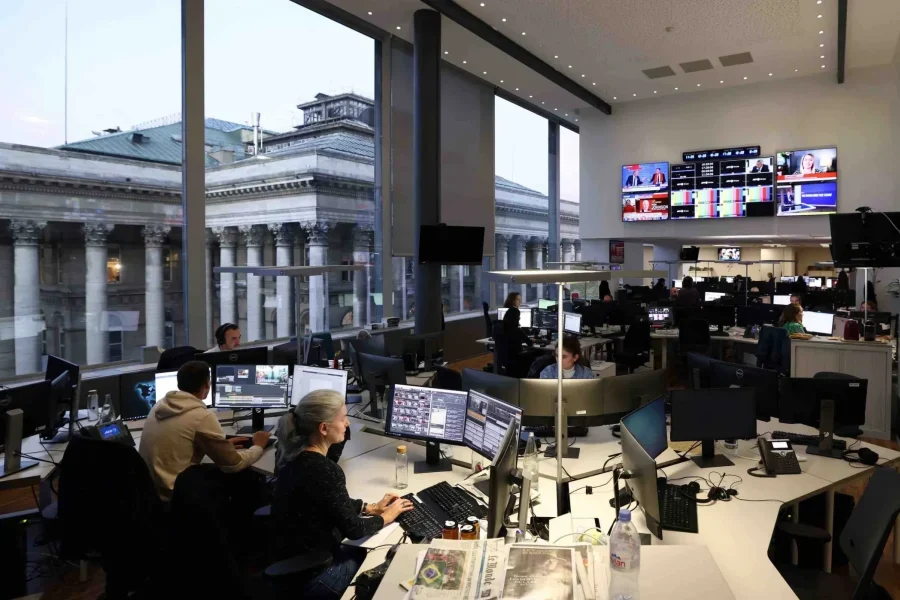The traditional newsroom, once defined by bustling offices filled with journalists, editors, and producers collaborating face-to-face, has undergone a dramatic transformation. The shift toward remote work, accelerated by global events such as the COVID-19 pandemic, has compelled news organizations to rethink their operations, workflows, and culture. Adapting to remote work presents unique challenges and opportunities for newsrooms as they strive to maintain journalistic quality, speed, and collaboration in a decentralized environment. This article explores how newsrooms are adapting to remote work, highlighting strategies, technological innovations, and cultural shifts shaping the future of journalism.
The Catalyst: Why Remote Work Became Essential
The onset of the COVID-19 pandemic in early 2020 forced an immediate pivot to remote work to protect staff health and comply with social distancing mandates. Even beyond the pandemic, evolving attitudes toward work-life balance, technological advancements, and cost considerations have made remote and hybrid models attractive for news organizations.
Remote work in newsrooms enables continuity of news production under challenging circumstances and offers flexibility to attract and retain talent.
Reimagining Communication and Collaboration
News production relies heavily on real-time collaboration and rapid information exchange.
- Newsrooms adopted digital communication platforms such as Slack, Microsoft Teams, and Zoom to facilitate seamless interaction.
- Virtual editorial meetings, pitch sessions, and newsroom briefings became the norm.
- Cloud-based document sharing and content management systems allowed simultaneous editing and workflow tracking.
- Chat channels and video calls replaced hallway conversations and face-to-face brainstorming.
Maintaining open, transparent, and frequent communication mitigates the risks of isolation and misalignment.
Leveraging Technology for Remote Journalism
Technological tools have been central to enabling remote news work:
- Portable recording equipment and mobile journalism apps empower reporters to gather and submit stories remotely.
- Virtual newsrooms utilize centralized digital hubs where assignments, scripts, and assets are managed collaboratively.
- Automated transcription, editing, and publishing tools streamline workflows.
- Data analytics and audience engagement platforms help news teams monitor performance and adjust strategies in real-time.
Investing in robust, user-friendly technology infrastructure is critical for efficiency.
Preserving Editorial Quality and Integrity
Working remotely can complicate editorial oversight and quality control.
- Editors developed new protocols for remote fact-checking, source verification, and approvals.
- Enhanced training ensured staff proficiency with digital tools and remote processes.
- Newsrooms emphasized documentation and transparency in decision-making.
- Collaborative review sessions helped maintain standards and consistency.
Strong editorial leadership and clear guidelines uphold journalistic integrity in distributed settings.
Adapting Newsroom Culture and Team Dynamics
Remote work challenges traditional newsroom culture centered on proximity and spontaneity.
- News organizations foster virtual social interactions through informal chats, virtual coffee breaks, and team-building activities.
- Managers prioritize mental health and well-being by encouraging flexible schedules and recognizing signs of burnout.
- Clear expectations and regular feedback support engagement and accountability.
- Inclusive practices ensure all voices are heard despite physical distance.
Nurturing a cohesive culture sustains motivation and collaboration.
Addressing Challenges of Remote Work
Several obstacles accompany remote newsroom operations:
- Technology access and connectivity disparities affect participation.
- Work-life boundaries blur, risking overwork and fatigue.
- Coordination across time zones complicates scheduling.
- Security concerns require rigorous cybersecurity measures.
Proactive policies and support systems help mitigate these challenges.
Impact on Reporting and Coverage
Remote work has influenced how news is gathered and reported:
- Journalists rely more on digital sources, virtual interviews, and user-generated content.
- Field reporting continues but with enhanced safety protocols and remote coordination.
- Coverage adapts to emphasize issues relevant to remote and digital life, such as health, technology, and social impacts.
- Collaborative cross-functional teams leverage diverse skills remotely.
Adaptability ensures newsrooms remain agile and relevant.
Opportunities for Diversity and Inclusion
Remote work can enhance newsroom diversity by:
- Broadening recruitment beyond geographic constraints.
- Offering flexible working arrangements appealing to underrepresented groups.
- Creating inclusive digital spaces that accommodate different communication styles.
Diverse perspectives enrich storytelling and audience connection.
The Future: Hybrid Models and Long-Term Integration
Many newsrooms are embracing hybrid work models combining remote and in-office presence.
- Hybrid arrangements balance collaboration benefits with flexibility.
- Physical office spaces may evolve into hubs for creative work and social interaction rather than daily presence.
- Continuous evaluation of workflows and technology ensures ongoing optimization.
The future newsroom is likely to be fluid, adaptive, and technology-driven.
Conclusion
newsrooms are dynamically adapting to remote work by embracing technology, rethinking collaboration, and evolving their culture. This transformation, accelerated by necessity, has revealed new ways to produce quality journalism while expanding inclusivity and flexibility. As remote and hybrid models become permanent features, news organizations that innovate and prioritize their people and processes will thrive in a changing media landscape.


